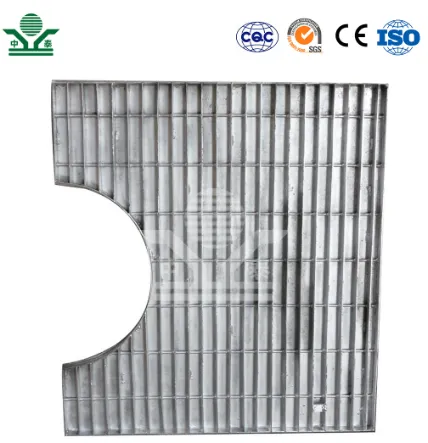The Art and Functionality of Perforated Sheet Metal Patterns
Perforated sheet metal has become a prominent choice in various industries due to its unique combination of aesthetic appeal and functional properties. Its patterns, which consist of holes, slots, or other shapes, present a captivating visual aspect while serving multiple practical purposes. Whether used in architectural design, industrial applications, or decorative elements, the versatility of perforated sheet metal makes it an intriguing subject worth exploring.
Understanding Perforated Sheet Metal
Perforated sheet metal is produced through a process that involves punching holes into a sheet of metal. The size, shape, and distribution of the holes can be customized to meet specific design requirements. Common materials used for perforated sheets include aluminum, stainless steel, and mild steel, each offering different strengths, corrosion resistance, and fabrication abilities.
The patterns created can range from simple round holes to complex geometric designs, patterned layouts, or even custom shapes that serve particular purposes, such as filtering or ventilation. This flexibility allows architects and designers to explore creative solutions to meet their aesthetic aspirations while fulfilling functional needs.
Aesthetic Applications
In architecture and interior design, perforated sheet metal is often employed as a decorative element. The intricate patterns can create visually stunning facades, ceiling panels, and dividers. These installations not only enhance the beauty of a space but also manipulate light and shadows, contributing to a dynamic visual experience.
For example, in modern buildings, designers often utilize perforated screens as sunshades. By selectively blocking sunlight, these screens reduce glare and heat gain while allowing natural light to illuminate interior spaces. The patterns can be designed to reflect the structure's identity, creating a harmonious link between the building and its surroundings.
Aside from large-scale architecture, artists and designers use perforated metal in smaller installations and furniture designs. Piece by piece, perforated elements can transform mundane objects into statements, playing with the visual intrigue created by holes of various sizes and formations, allowing light to interact differently with the surfaces.
perforated sheet metal patterns

Practical Applications
Beyond aesthetics, perforated sheet metal serves many practical functions across different industries. The most notable application is in filtration systems, where the sizes of the holes can be tailored to allow specific particles to pass while blocking larger ones. This characteristic is invaluable in wastewater treatment, chemical processing, and food production.
In the HVAC (Heating, Ventilation, and Air Conditioning) industry, perforated metal provides efficient air circulation. Duct systems utilize perforated sheets to distribute air evenly while minimizing noise and obstruction. By controlling airflow, companies can maintain ideal indoor climates, enhancing comfort and energy efficiency.
Moreover, perforated metal solutions are frequently employed in safety applications. Buildings, walkways, and staircases utilize perforated metal grates to provide traction while allowing water and debris to pass through, reducing the risk of slips and falls. This safety feature is particularly important in industries where spills and wet conditions are a concern.
Sustainability and Innovation
As industries increasingly focus on sustainability, perforated sheet metals are emerging as eco-friendly alternatives. Manufacturers adopt recycled metals, reducing waste and energy consumption. Additionally, the production of perforated sheets often results in less material usage compared to fully solid sheets, making them a more resource-efficient choice.
Innovation also plays a significant role in the evolution of perforated sheet metal patterns. With advancements in technology, such as computer numerical control (CNC) machining and laser cutting, the precision and complexity of designs have elevated dramatically. Designers can now create bespoke patterns that cater to specific functional needs while pushing creative boundaries.
Conclusion
Perforated sheet metal patterns epitomize the harmonious balance between form and function in design. Their capacity to enhance aesthetics while providing practical benefits positions them as a staple in various fields. From architectural applications that redefine spaces to industrial solutions that solve complex problems, perforated sheet metal showcases the endless possibilities in modern design and engineering. As technology progresses and sustainability remains a priority, the future of perforated sheet metal looks promising, ready to inspire innovation in its applications.
-
Why Galvanized Trench Cover Steel Grating Resists Corrosion
NewsJul.10,2025
-
The Versatility and Strength of Stainless Expanded Metal Mesh
NewsJul.10,2025
-
Load Calculations in Steel Grating Platforms
NewsJul.10,2025
-
Keeping Pets and Kids Safe with Chicken Wire Deck Railing
NewsJul.10,2025
-
Hole Diameter and Pitch for Round Perforated Metal Sheets
NewsJul.10,2025
-
Aluminium Diamond Mesh in Modern Architecture
NewsJul.10,2025
Subscribe now!
Stay up to date with the latest on Fry Steeland industry news.

